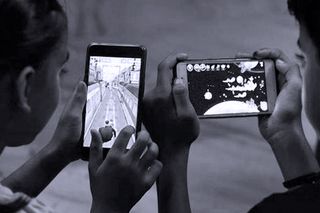
New Survey is a Glimpse Into What Indian Kids Are Searching for Online
It also highlights the limit to parental controls.

Kaspersky Lab, a cyber-security and an anti-virus provider, studied what children watched, listened to, purchased and searched for online in their summer break. The results, which were recently revealed, were taken anonymously from the lab’s flagship products that have activated parental controls, and from Kaspersky Safe Kids, a standalone service installed for kids’ online protection.
Of the 60,000 Indian children reached by these products, 0.19% searched for content related to alcohol or narcotics and 2.81% searched for pornographic content. Another 3.06% searched for computer games and 6.26% looked online for news and media. 13.80% looked for electronic content, 40.68% searched for communication or social media and 2.92% searched for other types of content.
While not remotely rigorous — there’s no age breakdown available, for one thing — the results are an interesting peek into how kids are using (or attempting to use) the internet. The fact that 20 times more children are searching for communication or social media than for pornography might reassure parents worrying over what kids are exposed to online. Kapersky of course noted that its software prevented any of the kids searching for porn from actually accessing it.
But while that, too, might be reassuring, the conversation around kids’ online safety has moved beyond mere prohibition. In one of our earlier reports, we had mentioned that most parental control apps just live up to their name: They attempt to control and monitor what kids can do online. A study from the University of Central Florida pointed out some disadvantages of this — such monitoring disregards teens’ developmental need for increased autonomy and prohibits them from being able to identify risks, take good decisions or build coping skills on their own.
Additionally, there is no evidence that Internet filtering tools are successful in monitoring a child’s access or exposure to sexual content, according to another report we have previously published.
Overblocking due to parental control poses another major issue. “There are concerns about human rights violations — that filtering can lead to ‘overblocking’ where young people are not able to access legitimate health and relationship information,” said Victoria Nash, PhD, deputy director of Oxford Internet Institute (OII) at the University of Oxford, and co-author of a study that established that parental controls are a less-effective way of helping teenagers navigate the internet.
Hence, parental controls probably need a reanalysis and call for the need to find methods that actually balance what content is available to kids online.
Digital literacy could be one of them. Building these skills could help children identify and avoid or deal with negative digital content themselves. It requires a little more effort in terms of time invested in conversations about internet safety. But kids, even teens, say they would rather their parents talk to them than use parental control apps — not because they want to do some online activity that wasn’t allowed, but simply because they wanted their parents’ trust and respect.
These skills are farther reaching, experts say, turning into long-term ‘digital citizenship‘ — the idea that kids can be taught to navigate the virtual world responsibly and safely, just as they must be taught to navigate the real world. It requires effort, but it also fulfills the need to feel empowered.
Ultimately, the figures from Kapersky’s data aren’t that enlightening, or alarming. But they do provide an opportunity to discuss how best to protect kids online — and how best to help them protect themselves.
Anubhuti Matta is an associate editor with The Swaddle. When not at work, she's busy pursuing kathak, reading books on and by women in the Middle East or making dresses out of Indian prints.
Related


Digital Devices Get In the Way of Family Interaction More Than We Think
